In the age of sustainability and renewable energy, residential wind turbines have emerged as a promising solution for homeowners seeking to harness the power of the wind. These turbines offer the potential to generate clean and renewable energy right in your own backyard. However, to navigate the world of residential wind energy effectively, one must understand the heart of these systems – the wind turbine generator. For this purpose, in this comprehensive guide, we embark on a journey to uncover the intricacies of residential wind turbine generators and their pivotal role in powering a greener future.
- Exploring Residential Wind Turbines Generators
- The Mechanics of Wind Turbines – Components Unveiled
- Wind Turbine Generators – The Powerhouses of the System
- The Inner Workings of Wind Turbine Generators
- Why Wind Turbine Generators Matter
- Choosing the Right Residential Wind Turbine Generators
- Practical Examples and Scenarios
- Time to wrap it up
Exploring Residential Wind Turbines Generators
The quest to understand residential wind turbine generators begins with a fundamental exploration of these sustainable energy marvels. Residential wind turbines are compact, eco-conscious powerhouses designed to capture the kinetic energy of the wind and convert it into electrical power. The implications are profound: reduced carbon footprints, lower energy bills, and an environmentally responsible lifestyle.
The Mechanics of Wind Turbines – Components Unveiled
To unlock the full potential of residential wind turbines, we must first dive into the technical intricacies of their components. These systems comprise a series of interconnected elements, each with a specific role to play in the energy generation process. Let’s now take a closer look at these components:

1- Rotor and Blades:
The rotor, often regarded as the “captain” of the wind turbine, comprises a set of blades. These blades are akin to the wind’s sails, designed to capture its kinetic energy. Thus, when the wind flows over the blades, they begin to spin. It is that rotation that sets the entire system in motion, initiating the process of energy conversion.
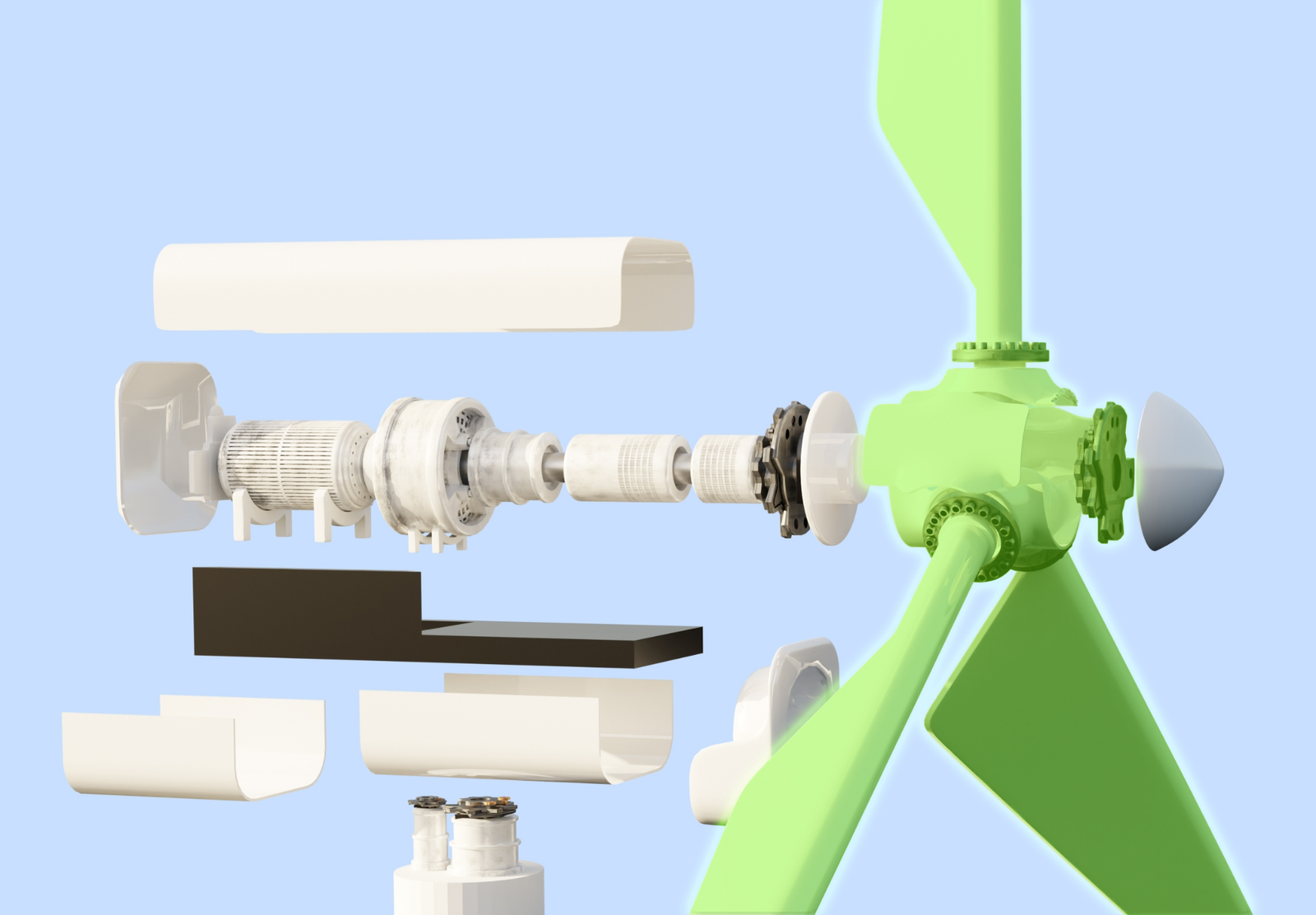
2- Nacelle:

The nacelle can be likened to the brain and control center of the wind turbine. Housed atop the tower, it encompasses a range of crucial components, the most prominent of which is the generator. It is within the nacelle where critical decisions are made, ensuring the system operates efficiently and adapts to varying wind conditions.
3- Generator:
Wind turbine generators are undeniably the heart of the wind turbine. It is where the true magic happens. When the rotor spins, it generates mechanical energy, which, in turn (pun intended), is converted into electrical energy within the generator. This transformation is achieved through the principles of electromagnetic induction, resulting in a flow of electrical current ready to power homes and appliances.
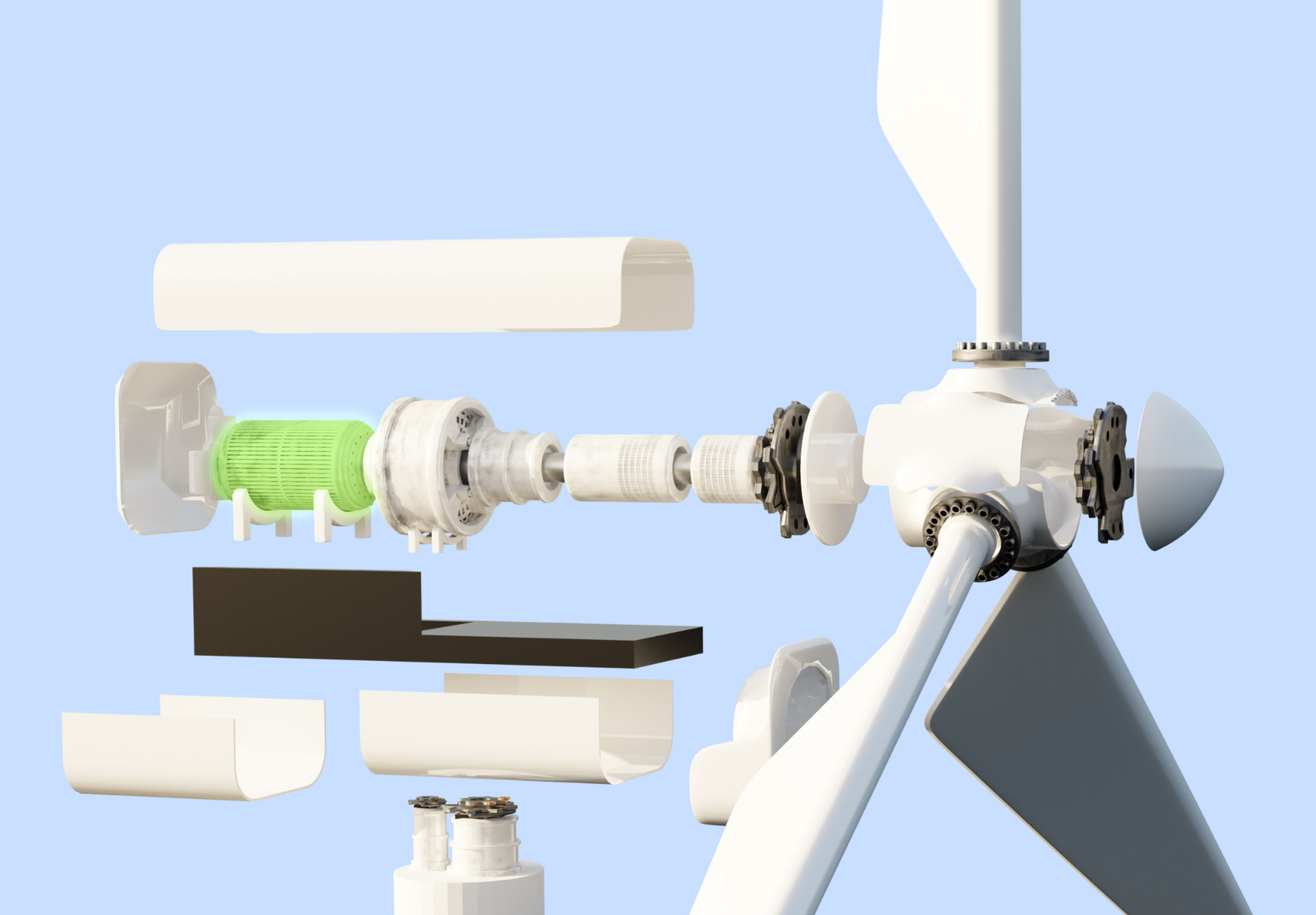
4- Gear Box:
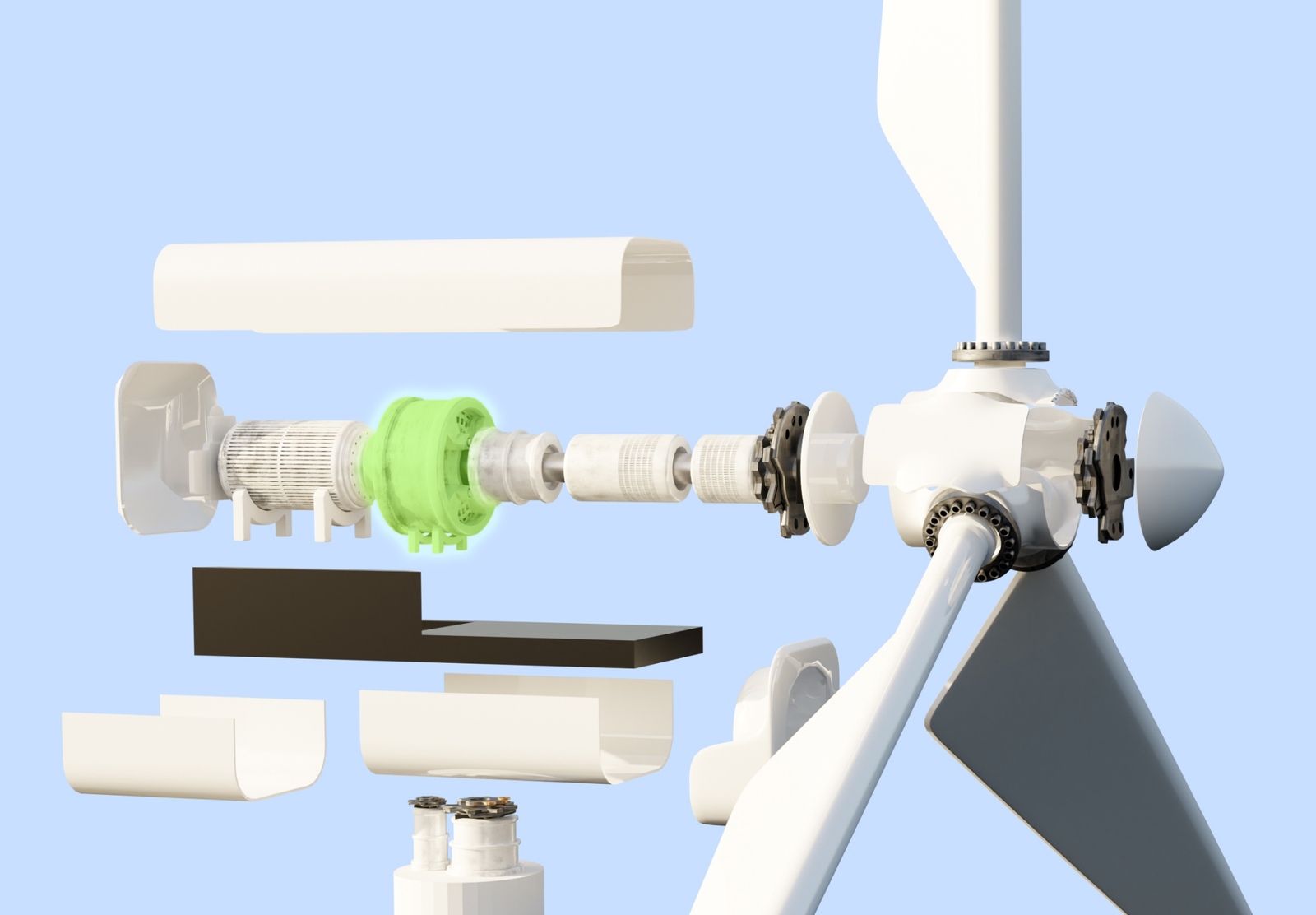
The gear box is a mechanical marvel that facilitates the efficient transfer of energy. It connects the low-speed shaft of the rotor to the high-speed shaft of the generator. This crucial intermediary component ensures that the mechanical energy derived from the rotor’s rotation is appropriately adapted for efficient electrical generation within the generator.
5- Tower:
Soaring into the sky, the tower serves as the backbone of the wind turbine. Its primary purpose is to raise the entire system to higher altitudes where wind speeds are typically more consistent and powerful. By elevating the wind turbine, the tower ensures that it can capture the maximum available wind energy.
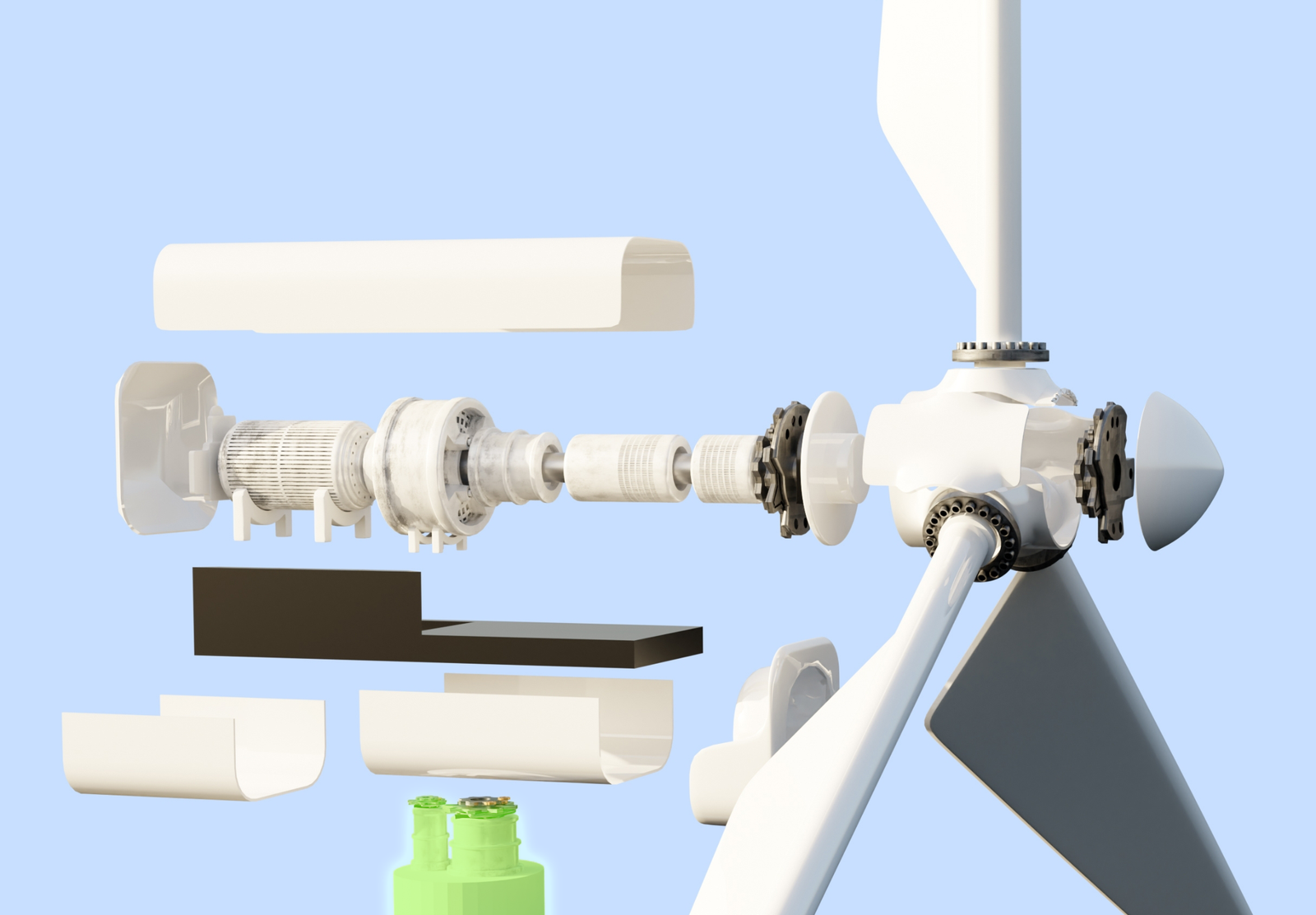
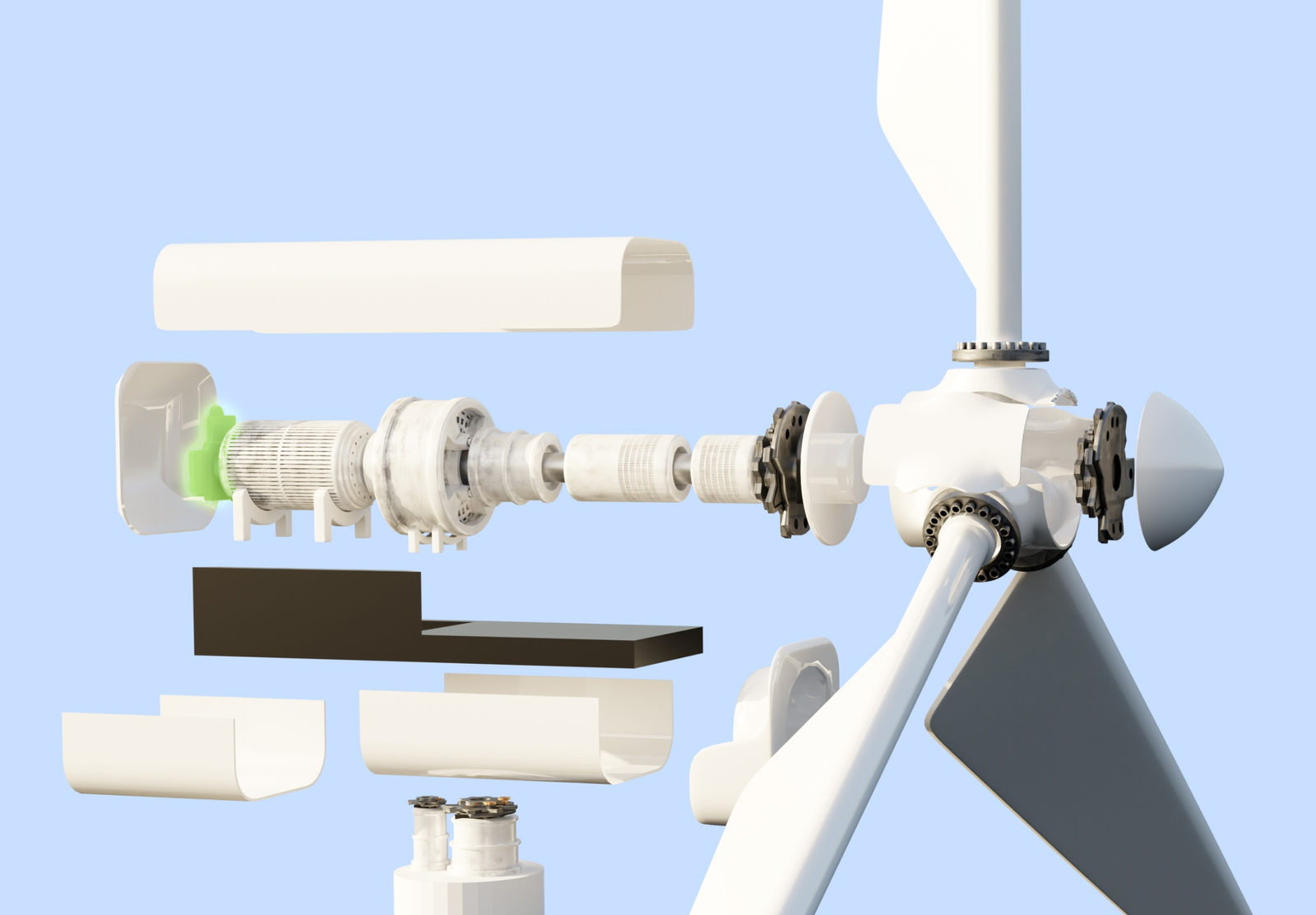
6- Controller and Inverter:
The controller and inverter form the wind turbine’s nervous system. They manage the flow of power, ensuring that the electricity generated aligns with your home’s electrical system. In other words, the controller regulates the operation of the turbine, while the inverter converts the direct current (DC) electricity into alternating current (AC) electricity. This makes the electricity compatible with most household appliances.
The synergy of these components is vital for efficient energy production, and understanding their role surely paves the way for a deeper appreciation of the wind turbine generator.
Wind Turbine Generators – The Powerhouses of the System
As mentioned previously, central to any residential wind energy system are the wind turbine generators. These are the powerhouses that convert the mechanical energy harnessed from the wind into electrical energy ready to illuminate your home. The key to selecting the right residential wind turbine lies in comprehending the types of generators available and their respective applications. Let’s now deep dive into the two types of generators we usually find in residential wind turbines.
Main Types of Wind Turbine Generators:
Synchronous Wind Turbine Generators:
These wind turbine generators operate in synchrony with the grid’s frequency, making them suitable for grid-connected systems. They ensure that the electricity generated matches the grid’s frequency and can seamlessly feed excess power into the grid. This synchronization is essential for reliable electricity generation in areas connected to the grid.

Asynchronous Wind Turbine Generators:
Asynchronous generators, on the other side, do not need to align with the grid’s frequency. In fact, they usually operate independently, making them well-suited for off-grid applications. This flexibility allows them to generate electricity even in remote areas where grid connectivity may be absent or unreliable.
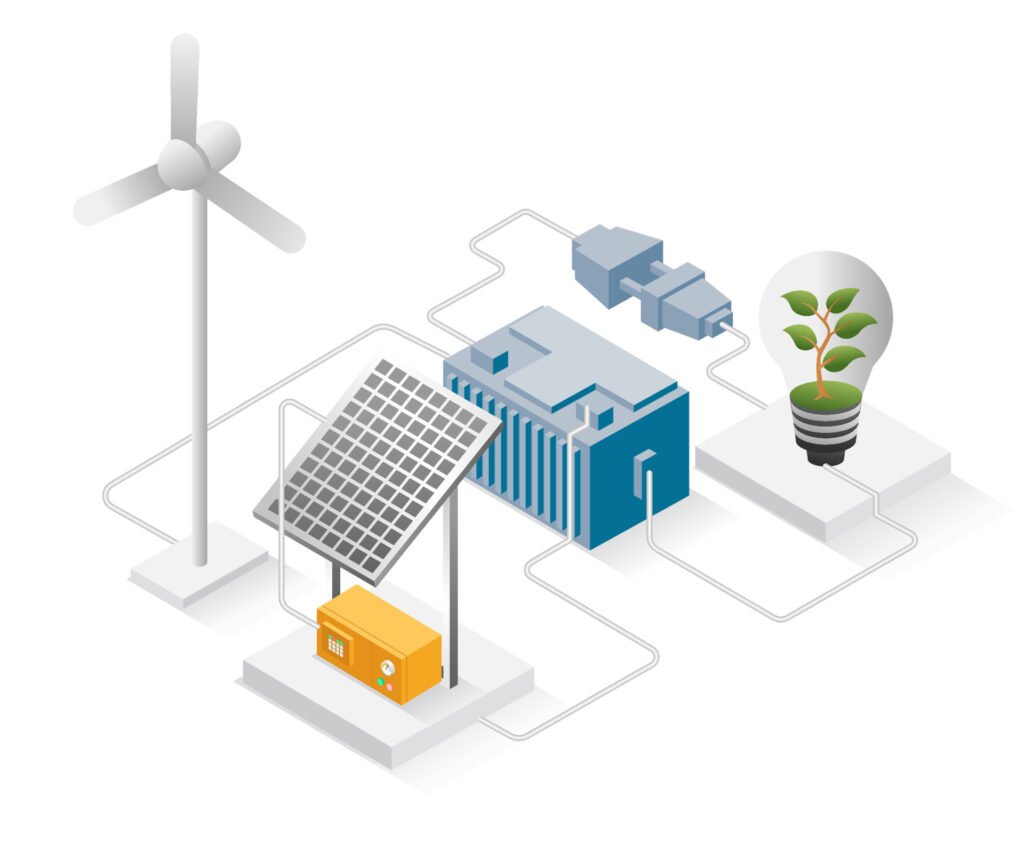
In essence, understanding the nuances of these generator types provides valuable insight into their role in the residential wind energy landscape. In addition, a good comprehension of these differences will definitely help in making the right choice when shopping for a residential wind turbine.
The Inner Workings of Wind Turbine Generators
Understanding the inner workings of wind turbine generators is like unveiling the magician’s secrets. These powerhouses are responsible for the mesmerizing act of converting the kinetic energy of wind into the electrical energy that lights up our homes.
Mechanical Energy Conversion: It all begins with the kinetic energy of the wind, as it flows over the rotor’s blades. The wind’s force sets the blades into motion, spinning the rotor. This rotational movement then captures the mechanical energy generated by the wind.
Electrical Energy Conversion: The generator, residing in the nacelle, is the central figure in this energy transformation. As the rotor spins, it drives the generator, a marvel of engineering. It is within the generator that the mechanical energy is converted into electrical energy. This transformation occurs through the principles of electromagnetic induction, which is what creates a flow of electrical current.
Impact of Wind Speed: Of course, the wind’s speed plays a pivotal role in the performance of wind turbine generators. The higher the wind speed, the more kinetic energy is harnessed, resulting in increased mechanical energy. This, in turn, translates to higher electrical energy output.
Why Wind Turbine Generators Matter
As stated above, understanding the role of wind turbine generators is not just an academic exercise but a vital step when considering a residential wind turbine for your home. This is why we consider important to take a closer look at the following when shopping for a domestic wind turbine.
Energy Efficiency: The efficiency of a generator significantly impacts the overall performance of a residential wind turbine system. Indeed, more efficient generators convert a higher proportion of the mechanical energy into electrical energy. Therefore, a high-efficiency generator ensures more electricity is generated from the same amount of wind, making the system more productive and cost-effective.
Environmental Impact: It is known that residential wind turbines have a substantial positive environmental impact. By reducing reliance on fossil fuels, these systems decrease carbon emissions and contribute to a greener planet. Thus, a fundamental understanding of wind turbine generators underscores their environmental significance.
Cost Considerations: Evidently, the choice of the right wind turbine generator can also have financial implications. More efficient generators may come with a higher initial cost. However, they should offer greater savings in the long-term by maximizing energy production.
By realizing the profound impact of wind turbine generators, you are better equipped to make informed decisions when selecting a residential wind turbine for your home. This is great, but let’s bring it up a notch and look at practical examples and real-world scenarios to further elucidate these important considerations.
Choosing the Right Residential Wind Turbine Generators
The journey to a greener future through residential wind energy wouldn’t be complete without guidance on how to select the perfect wind turbine for your unique needs.
- Assessing Wind Conditions: The first step in choosing a residential wind turbine is evaluating the wind conditions in your area. The reality is that wind patterns can vary significantly on a daily basis. Hence, understanding the wind speeds and consistency in your location is essential for selecting an appropriate system.
- Energy Needs: Assessing your household’s energy consumption is another pivotal step. After all, understanding your energy needs will definitely help determine the size and capacity of the wind turbine required. In addition, setting energy-saving goals can certainly guide you towards the right system suited for your specific needs.
- Compatibility with Generator Type: When shopping for a residential wind turbine, it’s crucial to ensure compatibility between the generator type and local wind patterns. As we covered previously, different generators are better suited for specific applications. Thus, aligning them correctly with your location’s wind conditions is key to system efficiency.
- Research and Expert Consultation: Don’t embark on this journey alone! In fact, we always recommend to research reputable manufacturers, explore product reviews, and seek expert advice from renewable energy professionals. Their insights and experience can prove invaluable in choosing the ideal residential wind turbine for your home.
Practical Examples and Scenarios
To enhance your understanding of the concepts discussed, we’ll dive into a few practical examples and scenarios in order to shed light on the considerations when choosing a residential wind turbine generator. Let’s get started:
Scenario 1: Synchronous Wind Turbine Generator for Grid-Connected Homes
Firstly, imagine you reside in an urban area with reliable grid connectivity. In such a scenario, a synchronous generator is an excellent choice for your residential wind turbine. It synchronizes with the grid’s frequency, allowing excess electricity to seamlessly feed back into the grid. As a result, this not only powers your home but can even earn you credits through net metering. Double win!
Scenario 2: Asynchronous Wind Turbine Generators for Remote Locations
Now, let’s move on to a remote countryside location where grid connectivity is scarce. This is where the asynchronous generator shines. Why? Because its ability to operate independently, without the need for grid synchronization, makes it perfect for off-grid living. In other words, you harness the wind’s energy and store it in batteries for use whenever it is needed.
Scenario 3: Maximizing Efficiency for Cost Savings
To continue, let’s now consider a scenario where you’re focused on both sustainability and cost-effectiveness. In this case, a wind turbine generator with high efficiency is your go-to choice. While it should come with a higher upfront cost, its ability to convert more wind energy into electricity means greater savings on your energy bills in the long run.
Scenario 4: Expert Guidance for the Perfect Fit
Now, in a world where renewable energy solutions are more and more abundant, it’s easy to feel overwhelmed. This is when expert consultation becomes invaluable. Imagine consulting with a renewable energy professional who assesses your location, energy needs, and budget. They should also be able to recommend the ideal residential wind turbine system, and ensuring it aligns perfectly with your goals and resources.
Time to wrap it up
Without a doubt, residential wind turbines represent a remarkable leap towards sustainability and self-sufficiency. Within these systems, wind turbine generators act as the engines of energy production. A profound understanding of their types, efficiency, and significance is the key to selecting the right system for your home.
As you embark on the journey to greener living, remember that choosing the perfect residential wind turbine is not just a decision—it’s an investment in a more sustainable future. The wind’s power is within your reach, waiting to be harnessed and put to good use.
Want to share your experience with wind turbine generators, or have any questions for us? Please share your thoughts in the comments section below or in our Reddit Community (r/Greenrhub)

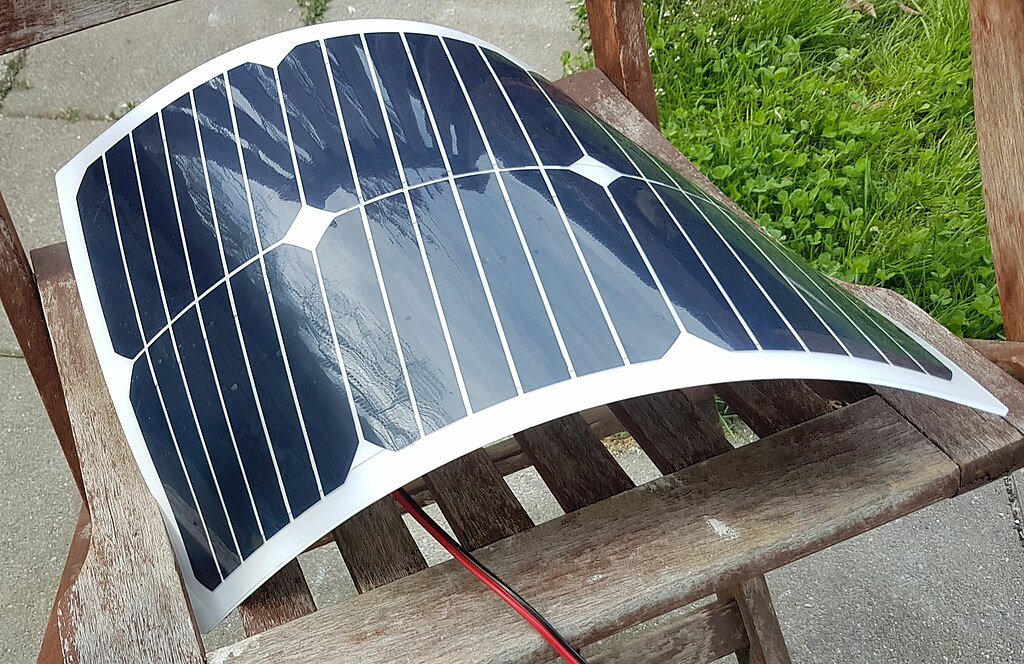
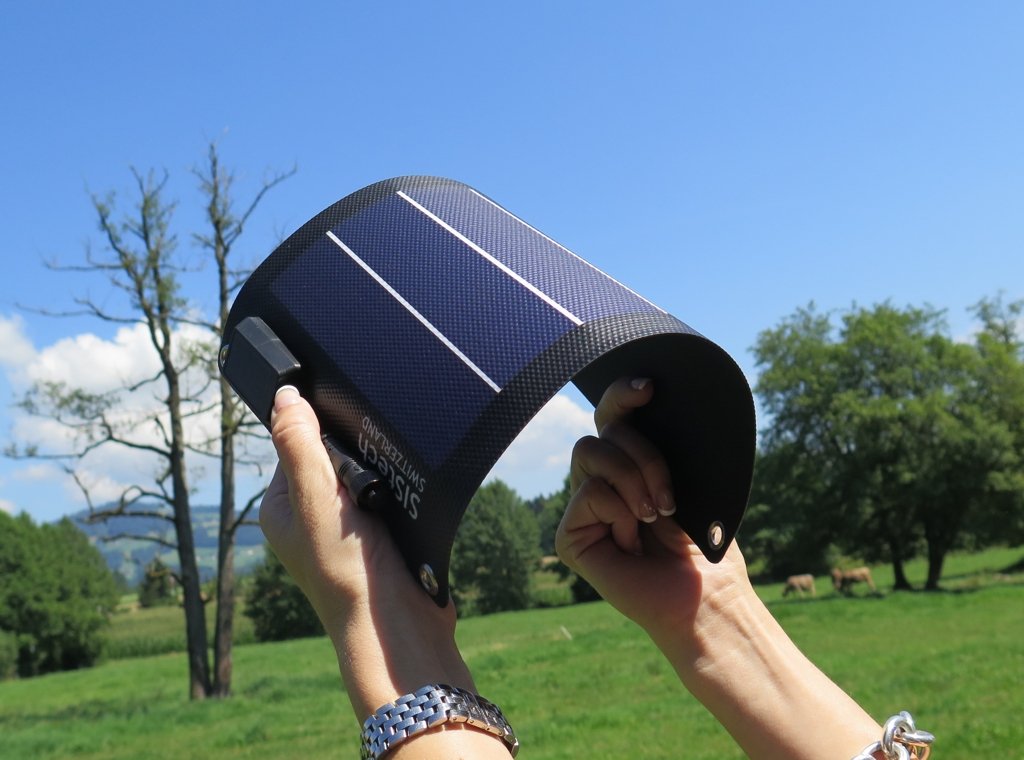

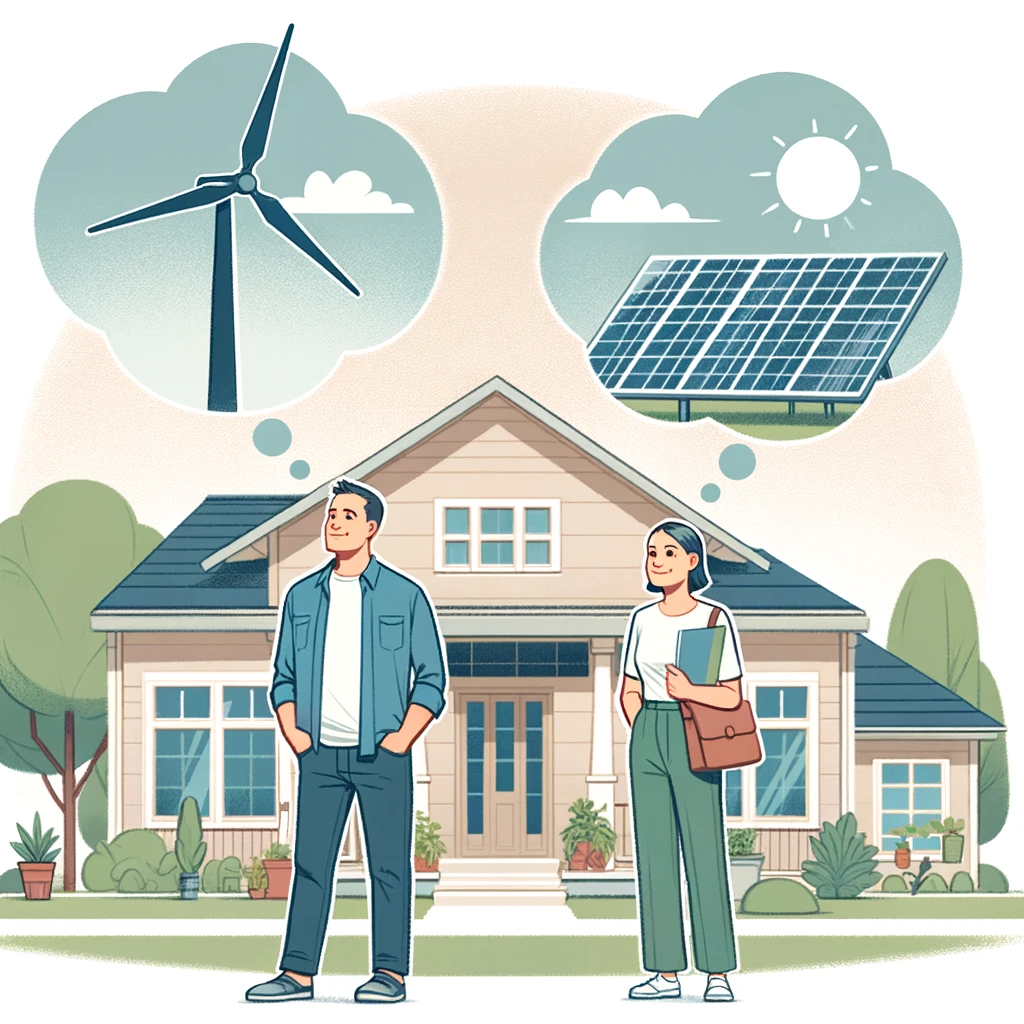
Leave a Reply